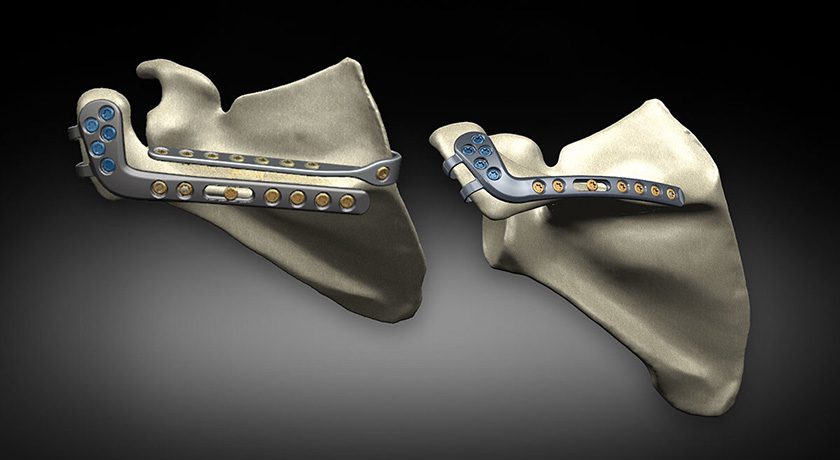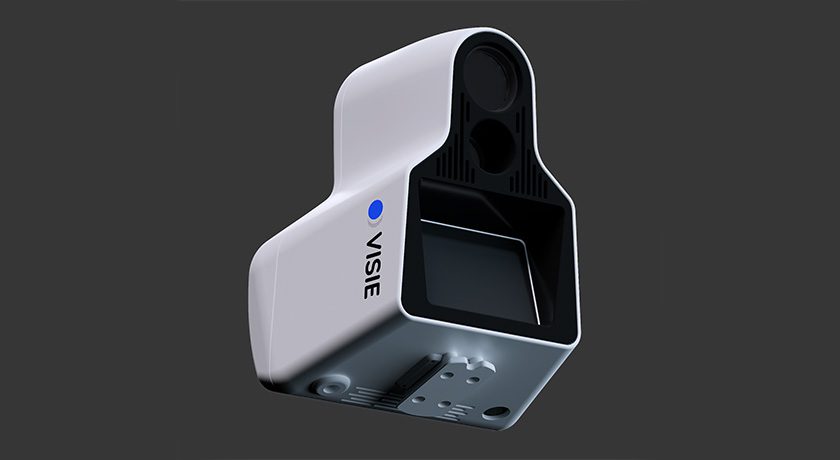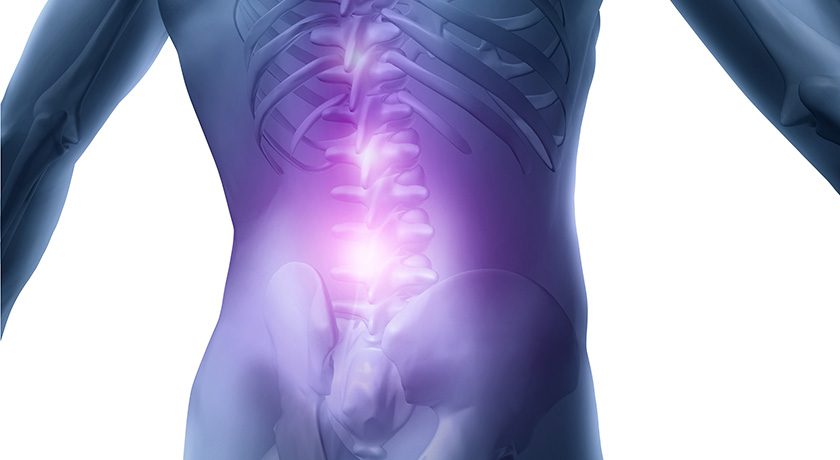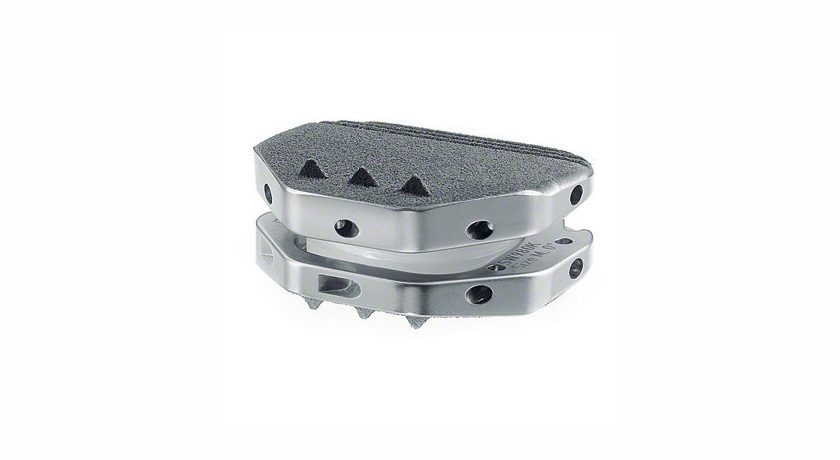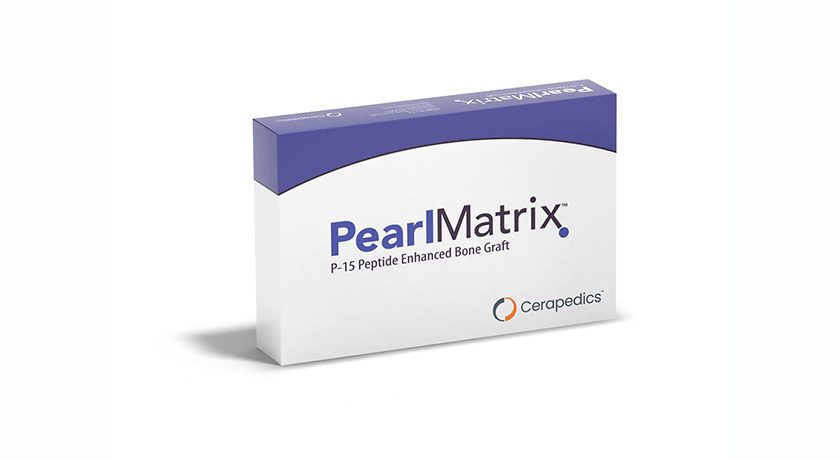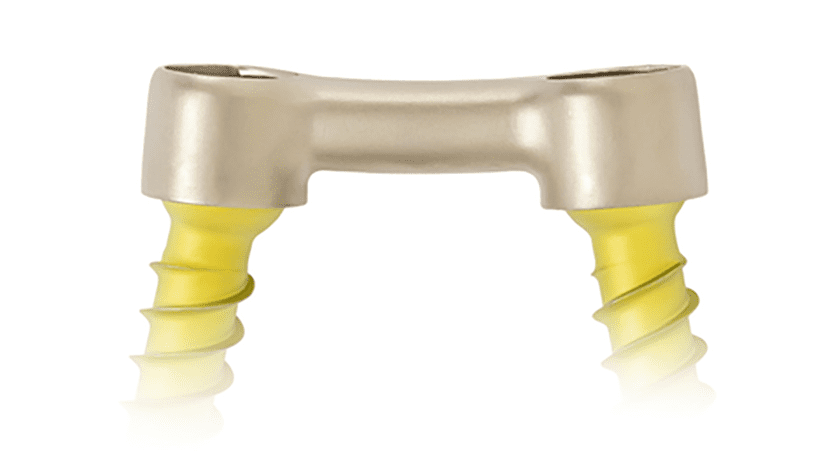

 Copy to clipboard
Copy to clipboard 
Nexus Spine commenced the full commercial launch of its PressON™ posterior lumbar fixation system. PressON features rods that press onto pedicle screws rather than attach using set screws. This novel design is approximately one-quarter the size of traditional systems, is reportedly faster to implant and biomechanically stronger, eliminates the possibility of set screw loosening, and allows for intraoperative construction of patient-specific rods. This full market release adds to the company’s growing compliant mechanism-based portfolio, including its line of flexible Tranquil™ titanium interbody fusion devices.
Nexus’s use of compliant mechanism technology allows for the creation of novel designs that behave in fundamentally new ways to solve unmet clinical needs. Compliant mechanisms function by bending rather than sliding. As an example, PressON incorporates flexible bores that are stretched over pedicle screw heads during implantation. The resulting elastic interference fit between screw and rod does not use traditional set screws, which have been shown to loosen during implantation and postoperatively.
David Hawkes, President of Nexus Spine, said, “The ability to secure PressON™ rods through elastic interference rather than using set screws is certainly a paradigm shift. We are in the process of shining a light on the incidence and harmful effects4 of set screw loosening through clinical and benchtop research. We look forward to sharing the results of these studies soon.”
Source: Nexus Spine
Nexus Spine commenced the full commercial launch of its PressON™ posterior lumbar fixation system. PressON features rods that press onto pedicle screws rather than attach using set screws. This novel design is approximately one-quarter the size of traditional systems, is reportedly faster to implant and biomechanically stronger, eliminates the...
Nexus Spine commenced the full commercial launch of its PressON™ posterior lumbar fixation system. PressON features rods that press onto pedicle screws rather than attach using set screws. This novel design is approximately one-quarter the size of traditional systems, is reportedly faster to implant and biomechanically stronger, eliminates the possibility of set screw loosening, and allows for intraoperative construction of patient-specific rods. This full market release adds to the company’s growing compliant mechanism-based portfolio, including its line of flexible Tranquil™ titanium interbody fusion devices.
Nexus’s use of compliant mechanism technology allows for the creation of novel designs that behave in fundamentally new ways to solve unmet clinical needs. Compliant mechanisms function by bending rather than sliding. As an example, PressON incorporates flexible bores that are stretched over pedicle screw heads during implantation. The resulting elastic interference fit between screw and rod does not use traditional set screws, which have been shown to loosen during implantation and postoperatively.
David Hawkes, President of Nexus Spine, said, “The ability to secure PressON™ rods through elastic interference rather than using set screws is certainly a paradigm shift. We are in the process of shining a light on the incidence and harmful effects4 of set screw loosening through clinical and benchtop research. We look forward to sharing the results of these studies soon.”
Source: Nexus Spine

You are out of free articles for this month
Subscribe as a Guest for $0 and unlock a total of 5 articles per month.
You are out of five articles for this month
Subscribe as an Executive Member for access to unlimited articles, THE ORTHOPAEDIC INDUSTRY ANNUAL REPORT and more.
JV
Julie Vetalice is ORTHOWORLD's Editorial Assistant. She has covered the orthopedic industry for over 20 years, having joined the company in 1999.


